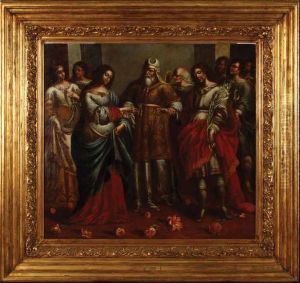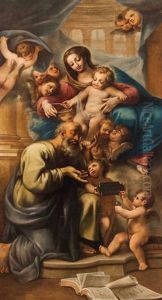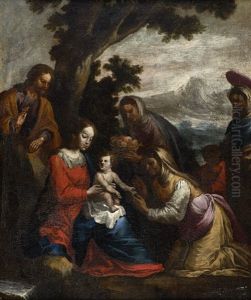Bento Coelho Da Silveira Paintings
Bento Coelho da Silveira was a Portuguese painter, born in 1620, in the period of the Iberian Union, when the crowns of Portugal and Spain were united under Spanish Habsburg rule. Despite Portugal's political situation, which often led to cultural overshadowing by Spanish dominance, Coelho da Silveira is remembered as one of the significant artists of the Portuguese Baroque era. His life and works are an integral part of the narrative of the development of Portuguese art during a time of significant political and cultural shifts.
Coelho da Silveira's artistic journey is somewhat obscure, with limited documentation about his early life and training. What is known is that he was active in Lisbon, where he produced most of his works. He was primarily a painter, but also dabbled in engravings and azulejos, the traditional Spanish and Portuguese painted, tin-glazed, ceramic tilework that was popular in the Iberian Peninsula.
Throughout his career, Bento Coelho da Silveira became known for his religious works, which were commissioned by various churches and cathedrals. He painted altarpieces and large-scale religious scenes, which were characterized by dramatic use of light and shadow, a hallmark of the Baroque style. His works often included deep, rich colors and a sense of movement, bringing biblical stories to life with emotion and intensity.
Despite his success as an artist, there has been little documentation to shed light on his personal life or his artistic development. This lack of information has made it difficult for art historians to fully understand his influence or the scope of his oeuvre. However, it is believed that his art played a role in the diffusion of the Baroque style throughout Portugal, influencing the work of subsequent generations of Portuguese artists.
Bento Coelho da Silveira's legacy continues to be celebrated in Portugal, where his works are preserved in museums and religious institutions. He died in 1708, leaving behind a body of work that reflects the religious fervor and the complex cultural dynamics of his time. His paintings remain as a testament to the Baroque spirit that animated the artistic productions of Portugal in the late 17th and early 18th centuries.


